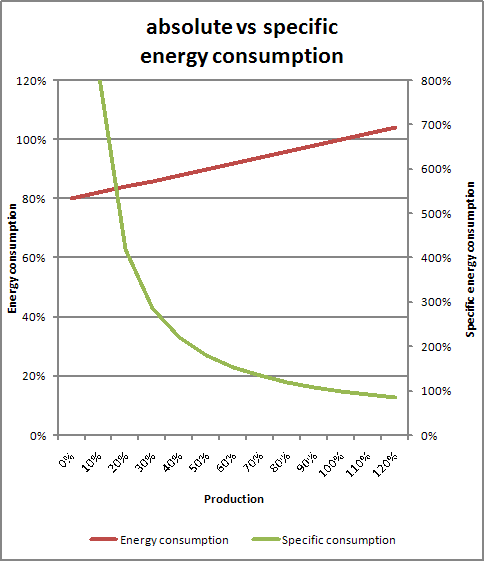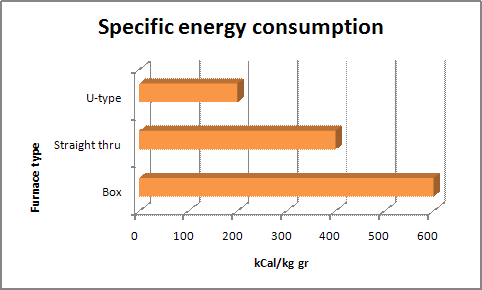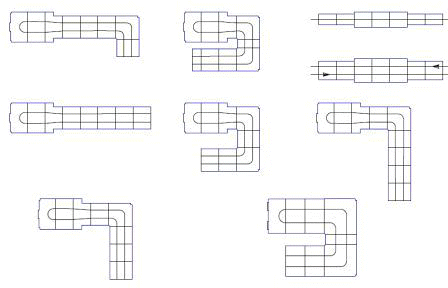Benefit from our knowledge & experience !
Reduction of energy consumption
at industrial enameling furnaces
How to save energy at an industrial enameling furnace ?
Enamel furnaces are typically the single biggest energy consumer within an industrial porcelain enameling plant, because they require considerable quantities of gas, oil and/or electricity during both daily start-up and operation.
The lowest possible energy consumption of an enamel furnace is achieved by :
determine the right furnace size
selecting the most efficient furnace technology
maintaining the furnace in a good condition.
upgrading the furnace design.
Point 1 & 2 should be taken into consideration prior to the investment in new enameling furnaces, while point 3 & eventually point 4 are more interesting for all current enameling furnace operators.
Furnace selection
With the expected rise of energy cost in the (near) future, the energy consumption plays an important role during the purchase of a new enameling furnace.
Enameling furnaces are build in many different shapes and dito heating technologies, each choice has its impact on the specific and total energy consumption of the furnace.
To match your products & production requirements with the most suitable enameling furnace, we utilize economical models based on total cost of ownership.
Optimizing furnace performance
The performance of enameling furnace tends to decline over time, due to gradual wearing of the equipment, insufficient maintenance and/or incorrect usage.
For optimizing the furnace performance again, we utilize the Lean Six Sigma DMAIC method, as shown below.

Specific energy consumption
The energy consumption of an enamel furnace may be measured in absolute terms (e.g. nm3 gas, kWh and/or liters oil per annum), but for bench marking purposes it is perhaps better to compare furnaces by their specific energy consumption during operation.This specific energy consumption is calculated by dividing the hourly energy consumption by the gross production. Click here to calculate the specific energy consumption of your furnace
The chart below show the relation between the absolute energy consumption, the specific energy consumption and the production. As expected the lowest possible specific energy of any furnace is achieved at maximum loading.

Influence of furnace design on the specific energy consumption.
The specific energy consumption of an enameling furnace is determined by the following aspects:
-
Temperature of goods & firing tools when entering and leaving the furnace (hotzone)
-
Radiation losses from the hotzone to the preheating zone, respectively workshop.
Energy losses thru the insulation.
-
Air leaks at hotzone and airstreams within entire furnace
-
Transfer efficiency of the heating system
-
Combustion efficiency and temperature of exhaust gases in case of a gas/oil fired furnace.
The impact of the first & second aspect is clearly visible when comparing the specific energy of respectively a box, straight thru and U type furnace. See indicative chart below.

The impact of radiation losses becomes also visible when comparing the specific energy consumption of S-shaped furnaces with "double hooked" or L-shaped furnaces with the same size & productivity. (See chart of various furnace shapes below)

Significant differences in heating-up time & energy consumption due to radiation losses may be observed by removing the "anti-radiation shields" of a proper functioning enameling furnace.
For this reason some companies experimented in the past with movable anti-radiation shields, which were attached to the furnace conveyor.
Warm air goes up and therefore air leakage is typically found at the furnace roof.
Notorious sources for energy losses due to air leakage are deformed shoeplates and/or shoeplates, which are made from the wrong material, and vapour exhaust holes which are too far open.
One or a combination of above mentioned aspects may be applicable for your enameling furnace.
Contact us
Ditmer Trading & Consulting BV is a family owned company, which was founded by Ronald Ditmer in 2007.
We are specialized in providing know-how, technical services & equipment to the porcelain (vitreous) enameling industry and have been deeply involved in the design of industrial enameling furnaces since 1984.
Please feel free to contact us for further information and/or assistance via the form below.
Related links
Related services
Investment advice
Project management & support
Furnace inspections
Furnace maintenance
Furnace repairs
Conversions to lightweight insultation
Conversions to gas heating
Furnace enlargements / hotzone extensions
Furnace relocations
Related supplies
Furnace spare parts
Firing tools
About Us
Ditmer Trading & Consulting BV is a family owned company, which was founded by Ronald Ditmer in 2007.
We are specialized in providing professional services & supplies to the porcelain (vitreous) enameling industry and have been involved in enameling furnace design since 1984.
Company details
Ditmer Trading & Consulting BV
Palissander 141
3315MP Dordrecht
The Netherlands
Phone :
+31-78-6169877
e-mail : info@ditmer.nl